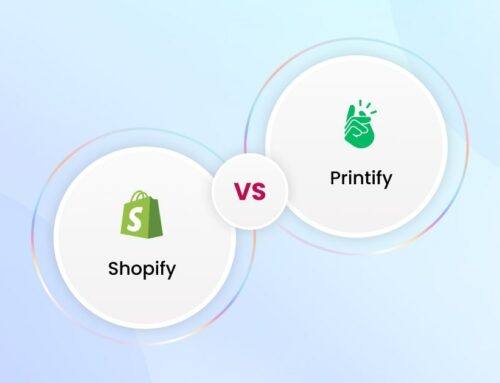When it comes to the most popular eCommerce platforms, it will be a mistake if we miss these two giants – Drupal vs Shopify. However, in this peer-to-peer comparison, it is a difficult question to decide who is the winner.
If you are wondering between Drupal vs Shopify, this article will be your light at the end of the tunnel. BSS Commerce Shopify provides a comprehensive and in-depth comparison to help you find the most appropriate choice.
Let’s check out with us!
Contents
- 1 Drupal vs Shopify: Overview
- 2 Drupal vs Shopify: Which Points Create Differences?
- 3 Shopify vs Drupal: Which is Your Ideal eCommerce Platform?
Drupal vs Shopify: Overview
Overview of Drupal

2022 has marked the 21st year of Drupal. In the beginning, Dries Buytaert created Drupal as a message board and then after a boost in 2003, Drupal technology got more attention and developed rapidly thanks to a dedicated community.
To be honest, Drupal is known as an excellent CMS (Content Management System). CMS allows you to create and publish your content in a user interface. When using Drupal, you can choose from a wide variety of content types, from texts, and images, to infographics, videos, etc. With effective and easy-to-use creation and editing tools, this CMS provides highly customized features.
As an open-source framework, Drupal encourages users to develop their websites by supplying free themes, core code, applications, etc.
The Economist, Australian Government, BBC, and NBC are the big partners of Drupal, which used its back-end framework to create and develop its official website. Besides, millions of other websites in the world, from personal blogs to political, corporate, E-commerce, and magazine websites, also choose Drupal to serve their users.
With impressive flexibility, highly customized features, multi-language support, responsive sites, strong security, and other strengths, Drupal can be said to be an “out of the box” platform.
It will be a dreamy choice for those who are searching for the right tool to build their website.
Overview of Shopify

Shopify is an eCommerce platform that allows you to create a website based on the Cloud SaaS model. Here, you can create your own online store with advanced functionalities such as shopping cart, payment, product management, social networking, etc.
If you are just an amateur in coding skills, this platform is for you. Shopify allows you to customize and develop your website with a perfect bundle of extensions, themes, modules, and so on. Why do more than 500,000 entrepreneurs in the world choose to trust Shopify? It is obvious that if you know how to take advantage of its benefits, Shopify will be a faithful companion.
This platform is easy to use even for those who are not technical professionals. With Shopify, you can design a user-friendly website, show your products, create promotions, and push sales, and handle orders in an easy way.
Shopify provides sellers with a big collection of completely free website themes in the Shopify Theme Store. Besides the available themes, Shopify Theme Store also has more eye-catching premium themes, which help you to optimize your online shop. In addition, Shopify has become one of the best eCommerce platforms because of inbuilt marketing tools, security, advanced functionality, etc.
Now, it is time to dive deeper into the features of Drupal and Shopify to find out the main differences between these two platforms!
Drupal vs Shopify: Which Points Create Differences?
Drupal vs Shopify: Ease of use
First and foremost, we are bound to say that Drupal is not an ideal option for those who don’t have basic coding skills. The Drupal learning curve is regarded as extremely difficult for newcomers. You need to spend a lot of time and effort to learn how to use Drupal, how to set up and extend your website, and how to develop your shop to attract more visitors.
Of course, it is possible to hire a professional developer or even an outsourcing team to help you build everything from zero. Nowadays, you just need a second to find a Drupal expert on the internet, who will support you and your website enthusiastically.
However, let’s take a glance at its opposite in this battle. In contrast, Shopify is a very straight-to-use platform. With a Shopify account, all that you need to do is to go to the Shopify Dashboard and get started.
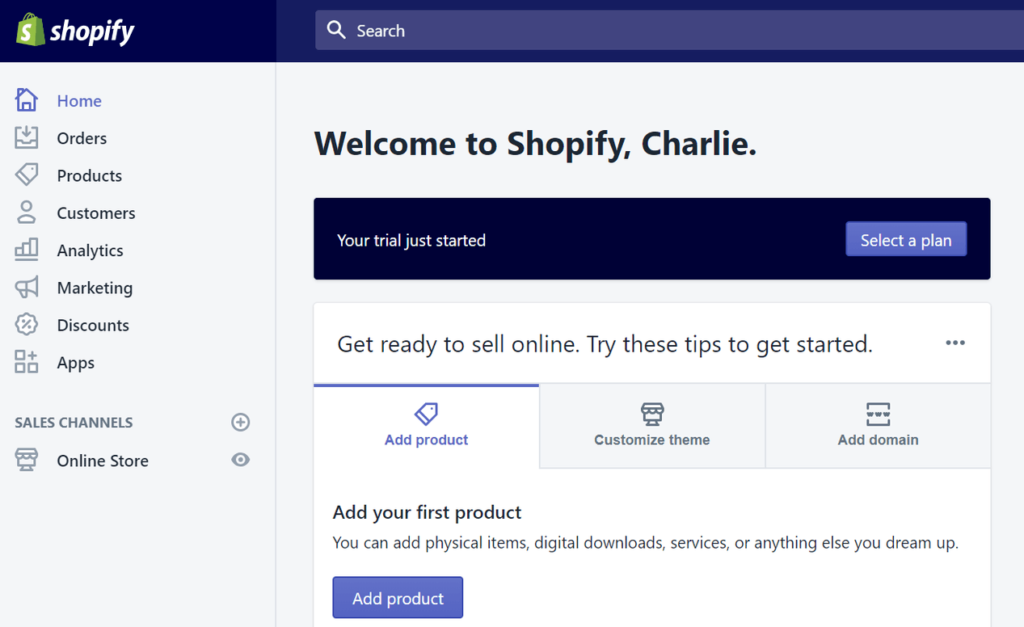
Even if you are not tech-savvy, don’t worry, with Shopify, you can build a fully-featured shop within hours. You can find a wide variety of online and free documents and materials on its official website. As an excellent beginner-friendly platform, Shopify made one point in this round.
Drupal vs Shopify: Features
Themes & Plugins

With more than 2,500 themes and 39,000 modules, Drupal provides different options to users. However, almost all Drupal users choose a customized theme, which is considered a flexible and efficient solution to extend and design their website. However, this also requires great help from a professional developer.
The Drupal community has made an important contribution to building an abundant collection of plugins (or modules, or add-ons). Many of them are totally free, which will help you save more money when adding instant features and functionality to develop and complete your website.
When searching for Shopify themes, you will find 150+ themes at all (including 12 free and 140+ paid), with prices ranging from $150 to over $300. There is no doubt that all themes from Shopify developers are mobile-friendly, modern, and eye-catching.
Besides, like Drupal, you also can design your own preferred themes and add them to Shopify. Another option is to choose a basic look theme and use different templates to create an impressive website.
In terms of plugins, this platform provides a Shopify store, which engages you to take advantage of 3100+ compatible apps (both free and paid). The app list is bound to help you build an online store from scratch with different fields such as marketing, sales, analysis, design, SEO, etc.
Both Drupal and Shopify allow their customers to use customized apps, which can be written by you or your team.
Dropshipping

Nowadays, dropshipping is becoming a more popular choice for eCommerce store owners. Simply speaking, a dropping store and an eCommerce store have similarities. The most remarkable difference is that when operating a dropshipping store, you don’t carry stock or ship it to customers. What you need to do is collect the order as well as payment and then transfer it to the wholesaler.
Two platforms Shopify and Drupal provide numerous extensions to handle every aspect of a dropshipping store.
With Shopify, it is available for you to set up the popular marketplace dropshipping apps in the store, such as Oberlo, AliExpress, Printify, and so on. However, keep in mind that each marketplace will require different types of fees (membership, shipping, etc.).
While Drupal doesn’t have a completed app store like Shopify, this CMS has the edge over the flexibility and scale. It can meet all the requirements of a dropshipping store owner with various modules. We will discuss this deeply in the next part about the ability to extend and customize.
Payment process
Basically, Drupal is a content management system, not an e-commerce platform. Therefore, Drupal itself doesn’t provide the most optimized options for payment processes like Shopify.
Shopify is in collaboration with more than 100 payment gateways, including very popular ones like Paypal, Alipay, 2checkout, etc., and its built-in payment method Shopify Payment. Whereas, Drupal has nothing by default. However, you can add everything to a Drupal website, and of course, a payment module is available.

Shopify vs Drupal: Ability to Extend and Customize
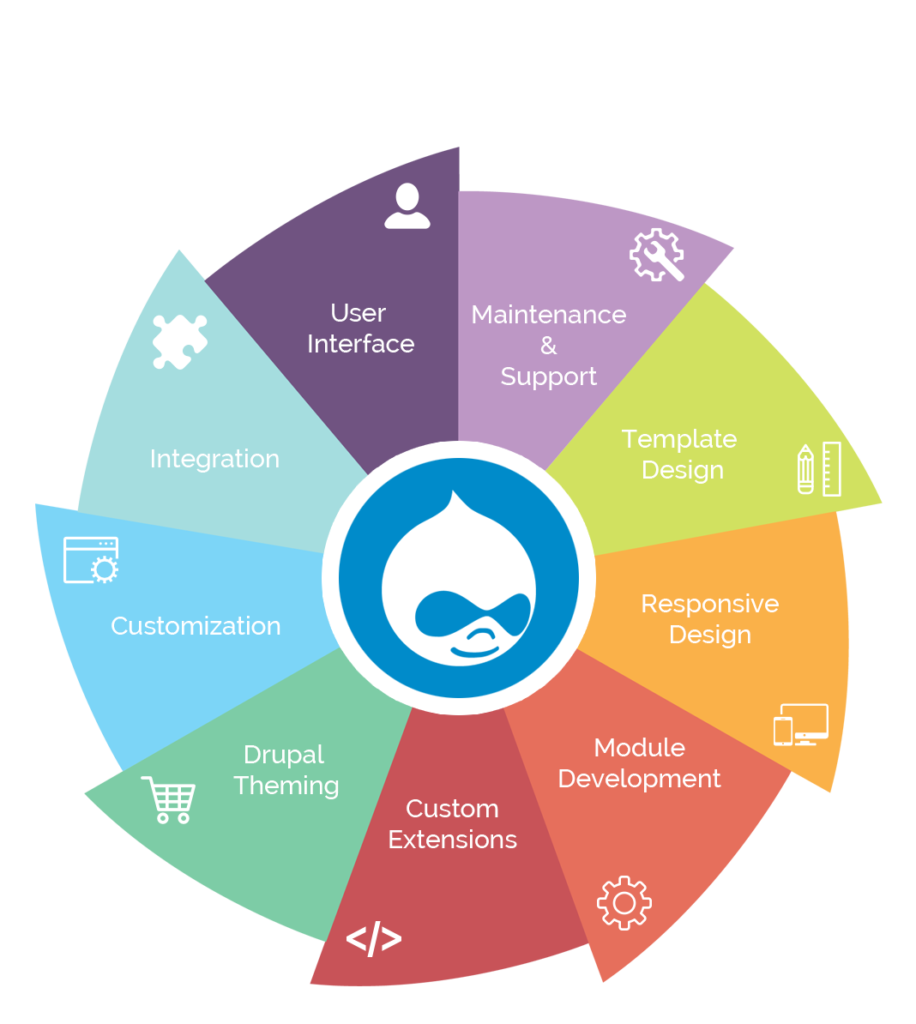
As we mentioned before, with 39,000+ plugins, Drupal is backed by a great number of extensions and modules that will play as the most powerful tools to accomplish a unique and eye-catching website. As a developer, Drupal will tickle your fancy for sure.
Or even when you are just a store owner without coding skills, if what you expect is a one-and-only website with a unique nature and remarkable design, Drupal will make you satisfied. Trust me, it is very hard to find out two Drupal websites that are, totally, the same.
You can stage a revolution with your website and change it into any type you want: an e-commerce store, a blog, a magazine, news, etc. and even create a mix of these forms.
Unlike Drupal – an open-source platform, although Shopify also allows you to use your own themes and plugins, it might require additional subscription fees or one-time fees. And when in comparison with its opposite, it is obvious that Shopify loses one point. It is difficult to bend your Shopify online store to your every will.
Drupal vs Shopify: Security
How a platform deals with security threats is an essential factor when taking them into consideration.
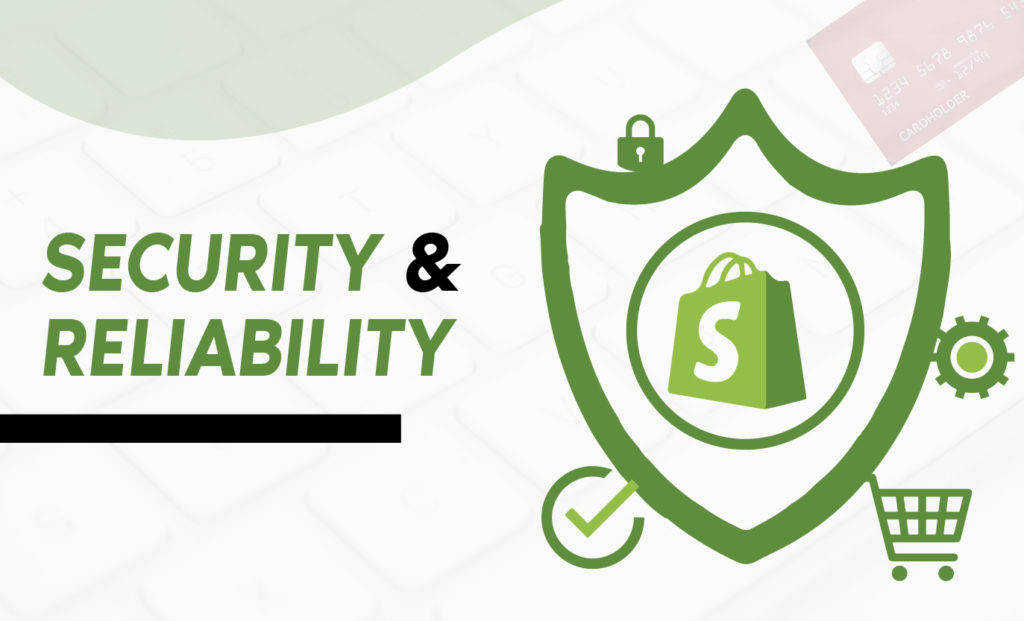
Generally speaking, Drupal does well in handling PCI compliance requirements such as database encryption, releasing regular updates and patches, as well as solving other complicated security problems. We all know that Drupal and other platforms cannot avoid every issue and threat.
Although Drupal users had to face up SQL injection vulnerabilities, they are resolved quickly in most cases by the community. This is the reason why the government like The White House or famous newspapers like The Economist choose Drupal.
In this round, Drupal and Shopify hold their tie. As a closed source, only Shopify developers can control its core framework and they have finished their work well. Also, Shopify strictly complies with The Payment Card Industry Data Security Standard.
However, when it comes to e-commerce stores, I will let Shopify plus one point because SSL certificates are activated by default on your website. And of course, you can install an SSL certificate in Drupal manually.
Drupal vs Shopify: Customer Support
To be honest, you will get strong and great support from both Drupal and Shopify. However, there is a small difference between them.
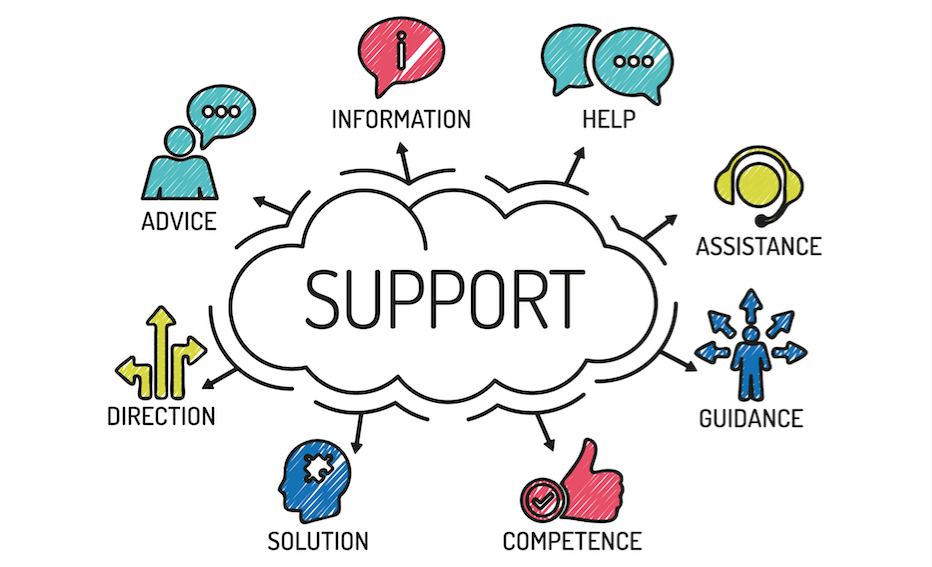
Through email, live chat, and phone, the Shopify team is willing to help you answer your doubts or solve any practical problems all the time. Besides, perhaps you will be interested in a very interesting and useful program Shopify Experts. Shopify will help you connect and cooperate with professionals in every field, from sales, SEO, marketing, to design, coding, etc.
And also, you shouldn’t ignore the Shopify Help Center and Shopify forum, where you can find valuable experiences from other users.
However, with Drupal, it is not easy for you to seek any help from the official Drupal team. Drupal has a very strong and dedicated community, which has created and contributed to its core code as well as numerous helpful modules. And they are the most enthusiastic and hard-working support team I have ever known.
If you encounter any issues, you should post a topic and tell them your problem to get quick and useful responses and suggestions. Drupal divided the specific areas such as Customizations issue, Moderators issue, Content issue, etc for different types of issue.
Drupal vs Shopify: Performance
In the sense of performance, we will focus on SEO – search engine optimization. Drupal and Shopify are SEO-friendly platforms.

Drupal, as we discussed before, is unlimited to extend and customize. Therefore, you can use the all-in-one SEO modules to launch your website and drive your customers’ engagement and sales. Along with that, Drupal also supports the most powerful SEO tools.
For example, Yoast SEO will let you know the norms and requirements Google uses to rank your content post. Native caching will contribute to the faster load times of your pages, which helps to increase your website’s visibility in search engines like Google.
In this battle, Shopify also has its own advantages. With a Shopify app store, you can find both free and paid SEO apps here. Shopify makes an impression on 301 redirects because it automatically announces to Google whenever you change a URL. Other SEO factors like meta descriptions, titles, alt text, etc. also are optimized in a Shopify website.
However, because Shopify is an eCommerce builder, its blogging system is very basic. If you want to develop your content-oriented website, you require support from a third party (like apps). Drupal, as a popular CMS, holds its edge over this point.
Drupal vs Shopify: Pricing & Transaction Fees
When using Shopify, you can choose from 3 different plans, including:
- Basic Shopify: $25 / monthly
- Shopify: $65 / monthly
- Advanced Shopify: $399 / monthly

If you opt for an annual or biennial plan, you can enjoy a 10% discount or 20% discount respectively.
Along with that, there are three other choices – Shopify Starter, Shopify Retail, and Shopify Plus. With Shopify Starter, you need to pay $1 per month. This option is for those who sell products at events and through social media and messaging apps. Although it is very cheap, we don’t highly recommend this plan because of its limited functionality.
Shopify Retail costs $89/month, allowing merchants to sell in-store with advanced staff, inventory, and loyalty features. And Shopify Plus, with the price of $2000/month, often is the choice of the big companies.
Let’s come back with Drupal.
It’s free to install and host a Drupal website, even to extend and develop your store with thousands of free modules on the internet. However, it is the ideal situation if you are a tech-savvy person, even a professional developer. But if you don’t have any coding knowledge and skills, Drupal could be a nightmare.
In this case, the answer to the question “How much does it cost to build a website with Drupal?” will depend on different factors, which could range from $200 to $20000. Some basic criteria you need to take into consideration are the country where you locate, you hire a developer for how long, which fields need support, etc.
With Drupal, transaction fees are decided by the different payment gateways you choose.
Shopify vs Drupal: Which is Your Ideal eCommerce Platform?
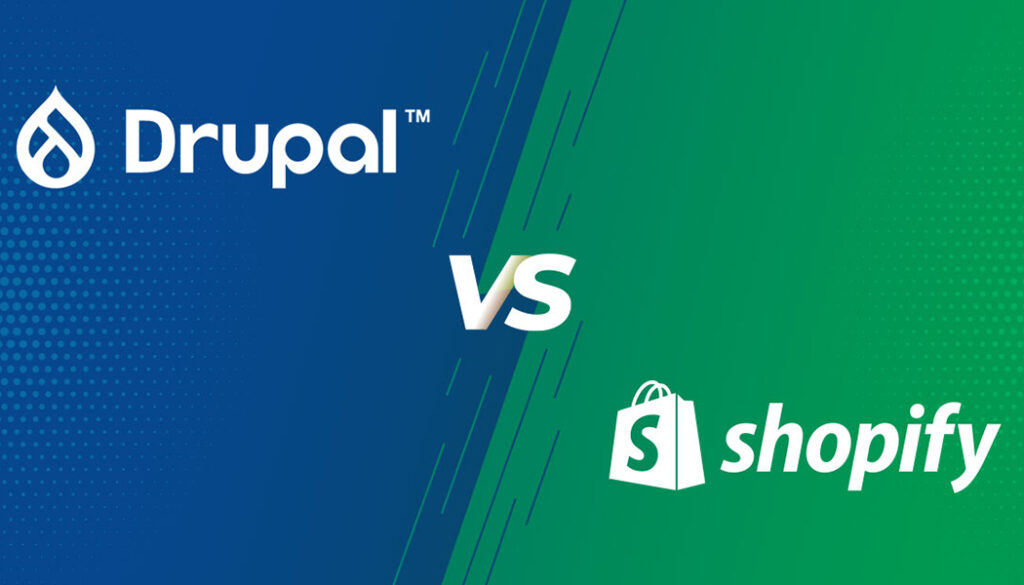
We will get an overall before going to the last conclusion.
| Pros | Cons | |
| Shopify |
|
|
| Drupal |
|
|
By nature, Drupal is a content management system and Shopify is an e-Commerce builder. It means that Drupal is a content-oriented platform more than a selling-oriented one. However, because of its flexibility, customization, and scalability, Drupal can help you create a perfect online store.
This platform should be your choice when you are a developer (or at least have the basic coding knowledge) to tweak your website at will. If you are ready to spend time and effort to learn how to use Drupal, or if you need a more unique and customized website, then it is time to experience Drupal.
However, if you don’t have too many requirements in customization and scale, and your starting point is to sell anything, I highly recommend Shopify. This platform is not for news, videos, infographics, etc. Shopify is the ideal place where online store owners list their products, drive customers’ sales, and sell and ship goods everywhere.
So, why don’t you give this all-rounder eCommerce platform Shopify a chance? You might be surprised because of its excellent features.
In conclusion, there is no answer to the question “Which platform is better – Shopify vs Drupal?”. However, there is always one platform that is more suitable for you. Be careful before making the last decision.
Discover other comparison posts of Shopify with other eCommerce platforms:
- Shopify vs building your own website
- Wix vs Shopify
- Shopify vs Shopify Plus
- Shopify vs Squarespace
- Shopify vs BigCommerce
- Shopify vs Weebly




